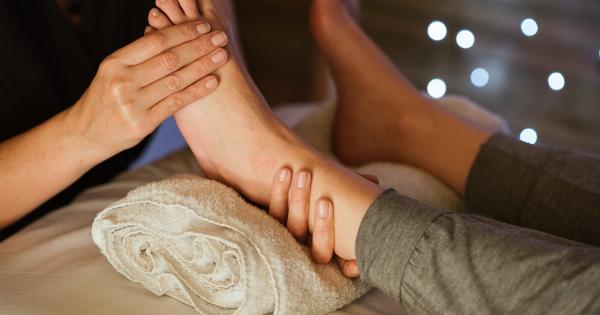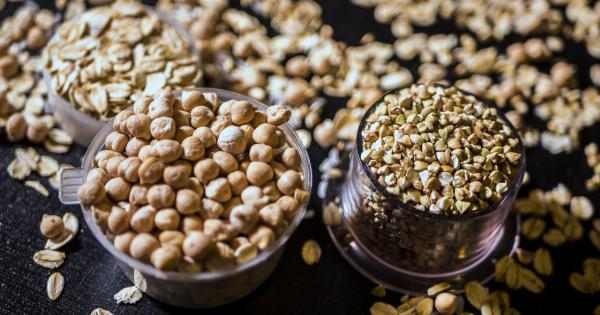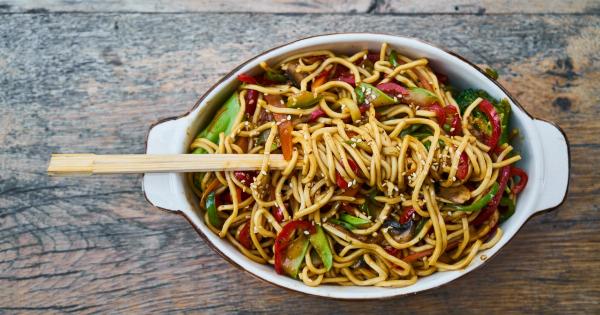Chronic venous insufficiency (CVI) is a medical condition characterized by the failure of venous valves to properly pump blood back to the heart, resulting in blood pooling in the lower extremities.
This condition can lead to a variety of symptoms, including leg swelling, varicose veins, leg pain, and skin changes. If left untreated, CVI can progress and cause serious complications such as venous ulcers and deep vein thrombosis.
However, with proper prevention and management strategies, individuals can effectively reduce their risk of developing CVI and improve their quality of life.
Understanding the Causes and Risk Factors
The underlying cause of chronic venous insufficiency is typically attributed to damage or dysfunction of the venous valves, which are responsible for preventing backflow of blood in the veins.
This damage may occur due to a variety of factors, including:.
- Deep vein thrombosis (DVT)
- Family history of CVI
- Phlebitis
- Pregnancy
- Obesity
- Smoking
- Prolonged standing or sitting
These risk factors can increase an individual’s likelihood of developing CVI. Understanding these causes and risk factors can help individuals take proactive measures to prevent or manage the condition.
Prevention Strategies
While there is no guaranteed way to prevent chronic venous insufficiency, certain lifestyle modifications and preventive measures can significantly reduce the risk. Here are some strategies that individuals can implement:.
Maintain a Healthy Weight
Obesity is a known risk factor for CVI. By maintaining a healthy weight through regular exercise and a balanced diet, individuals can reduce unnecessary pressure on their veins and minimize the risk of developing CVI.
Exercise Regularly
Regular physical activity, particularly exercises that promote leg movement such as walking, biking, or swimming, can help improve blood circulation and strengthen the leg muscles.
Stronger leg muscles can assist in promoting proper blood flow and reduce the strain on the venous valves.
Avoid Prolonged Sitting or Standing
Individuals with jobs that involve prolonged periods of sitting or standing should make a conscious effort to take breaks and move around. Simple activities like stretching or walking can help prevent blood pooling and alleviate pressure on the veins.
Elevate Your Legs
When sitting or lying down, elevating the legs above heart level can promote blood flow back to the heart and reduce swelling.
This simple technique can be particularly beneficial for individuals who experience leg swelling or have a sedentary lifestyle.
Wear Compression Stockings
Compression stockings provide external pressure to the legs, assisting in improving venous blood flow and preventing blood from pooling.
They come in different strengths and lengths, so it is important to consult with a healthcare professional to find the most suitable compression level.
Management Strategies
If chronic venous insufficiency has already developed, management strategies aim to relieve symptoms, control progression, and prevent complications. Here are some management strategies:.
Medical Treatment
Medical interventions may include medications to alleviate symptoms like pain or swelling, medications to improve venous circulation, or medications to prevent blood clots in cases of deep vein thrombosis.
Healthcare professionals may also recommend specific treatments such as endovenous thermal ablation or sclerotherapy to close off damaged veins.
Lifestyle Changes
In addition to the prevention strategies mentioned earlier, managing CVI includes maintaining a healthy lifestyle overall.
This includes following a healthy diet low in sodium, wearing compression stockings as advised, avoiding tight clothing that restricts blood flow, and refraining from smoking.
Exercise and Physical Therapy
Engaging in regular exercise or undergoing physical therapy can help improve muscle strength, enhance circulation, and manage symptoms associated with CVI.
Healthcare professionals can provide specific exercises tailored to individual needs and limitations.
Educating and Monitoring
Being aware of the condition and understanding how to manage its symptoms is crucial. Individuals should educate themselves about CVI and work closely with healthcare professionals for regular monitoring of the condition.
Understanding warning signs and early intervention can prevent complications.
Conclusion
Chronic venous insufficiency can significantly impact an individual’s quality of life if not properly managed.
By implementing preventive strategies such as weight management, regular exercise, and avoiding prolonged sitting or standing, individuals can reduce their risk of developing CVI. If CVI has already developed, management strategies including medical treatment, lifestyle changes, and exercise can alleviate symptoms and prevent complications.
It is important for individuals to be proactive in understanding and managing the condition to improve their overall venous health.































